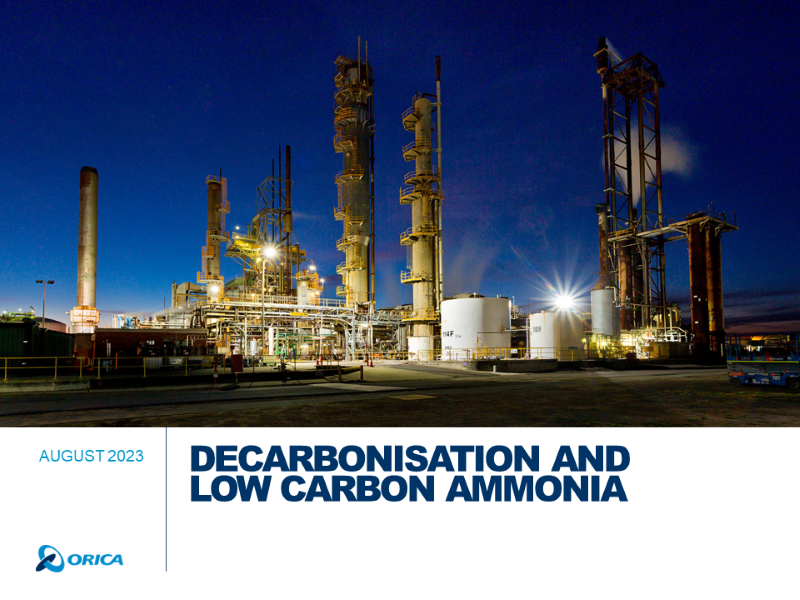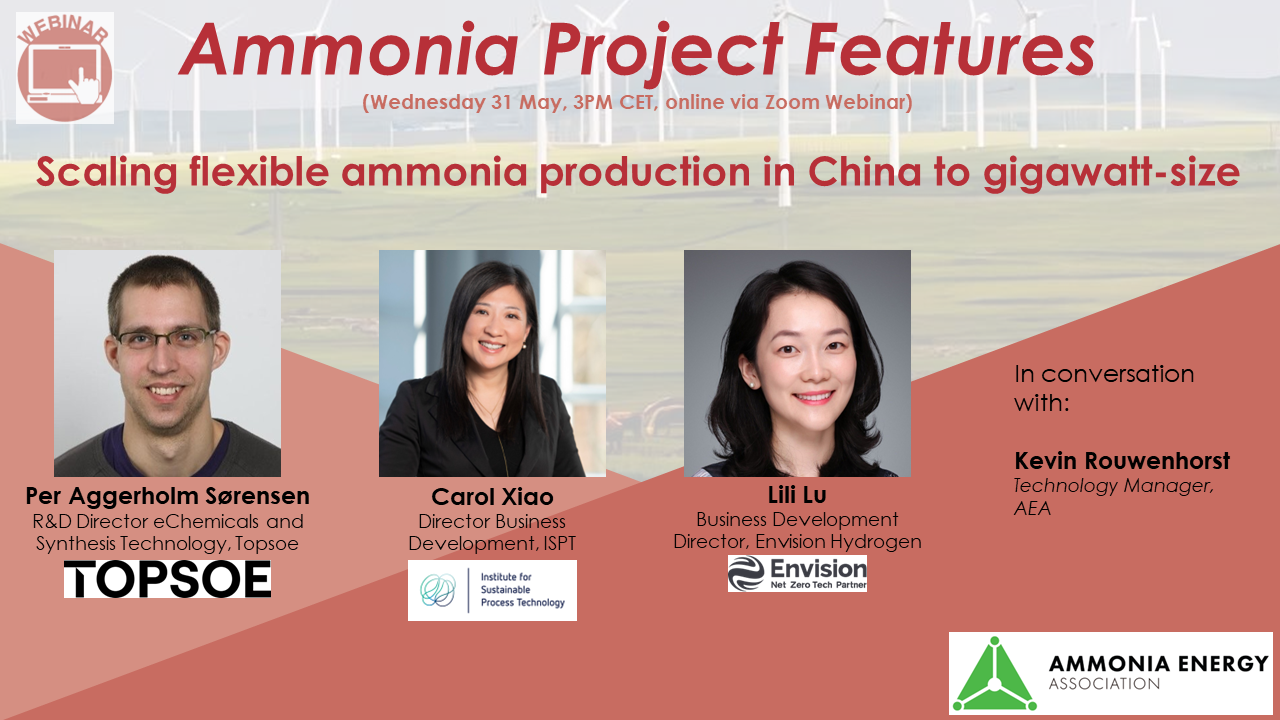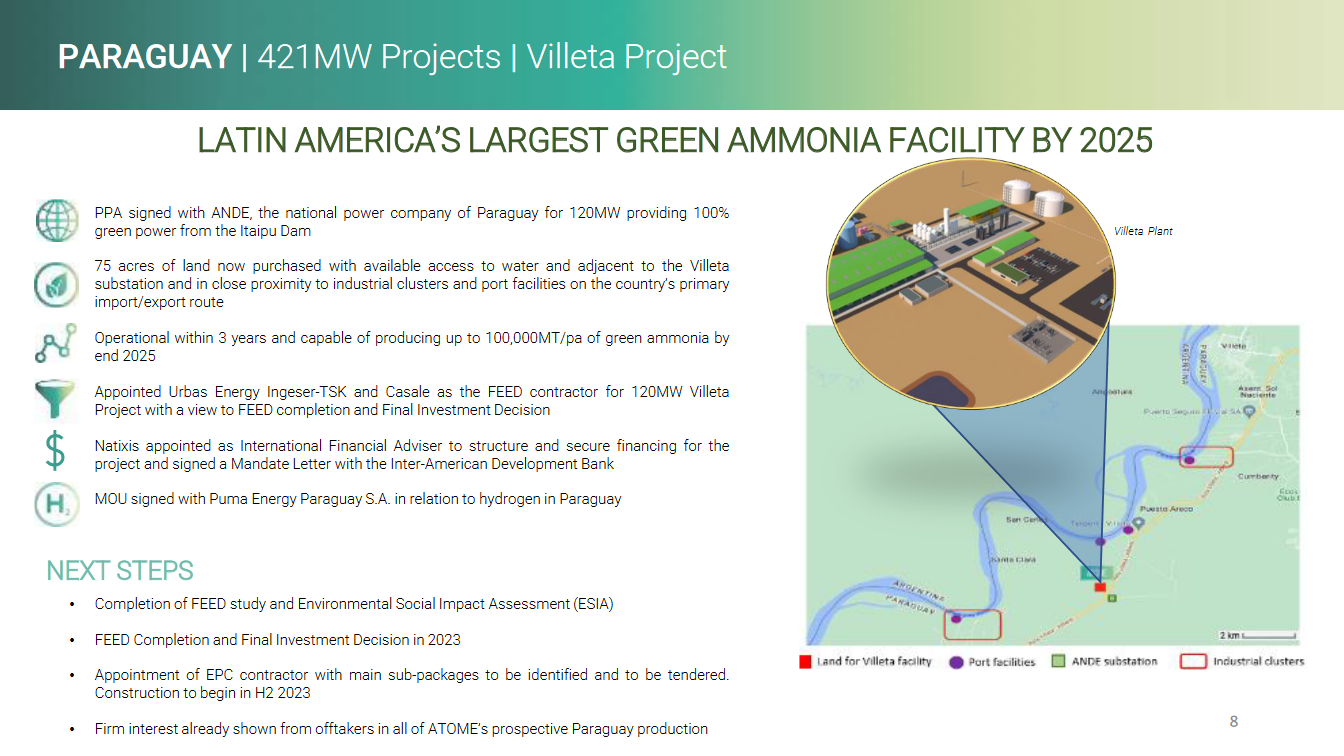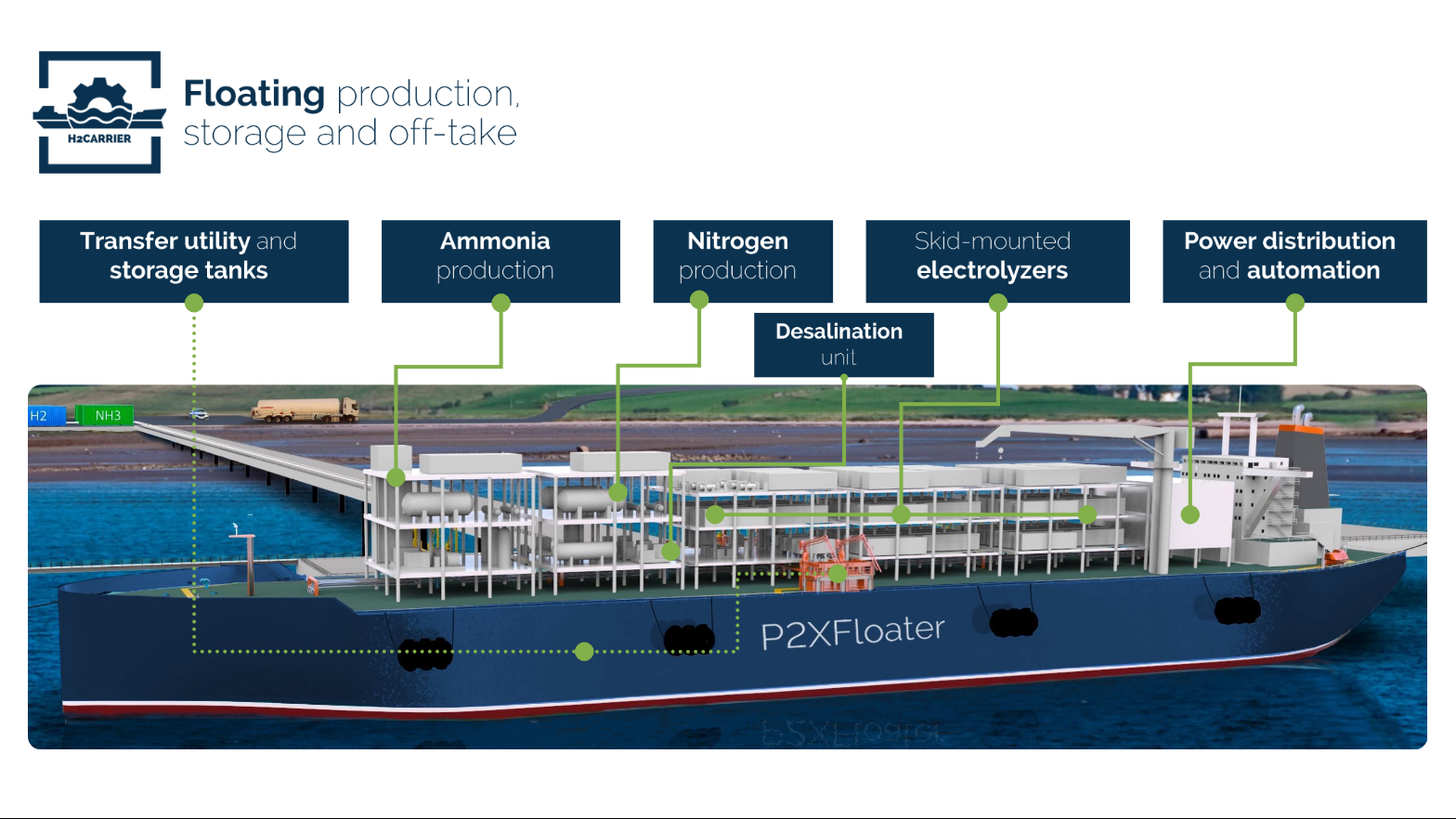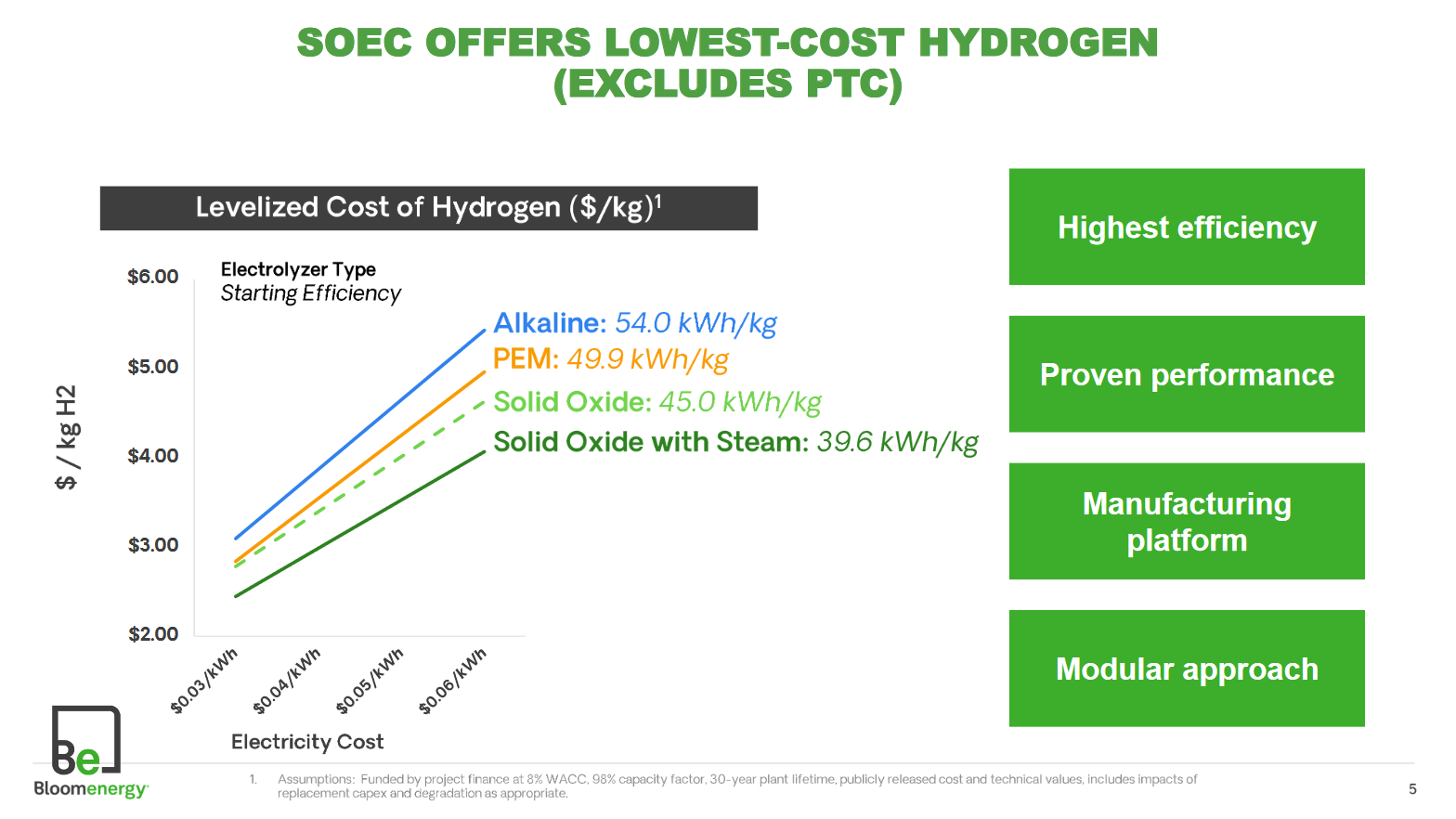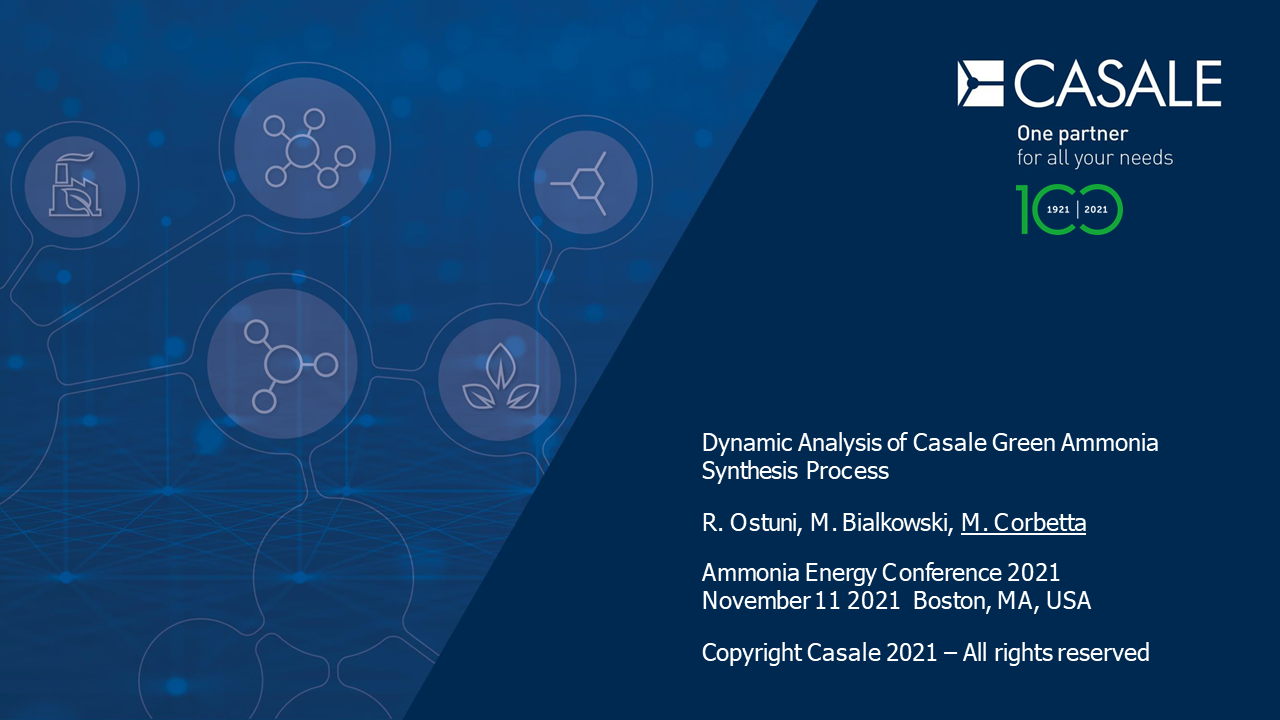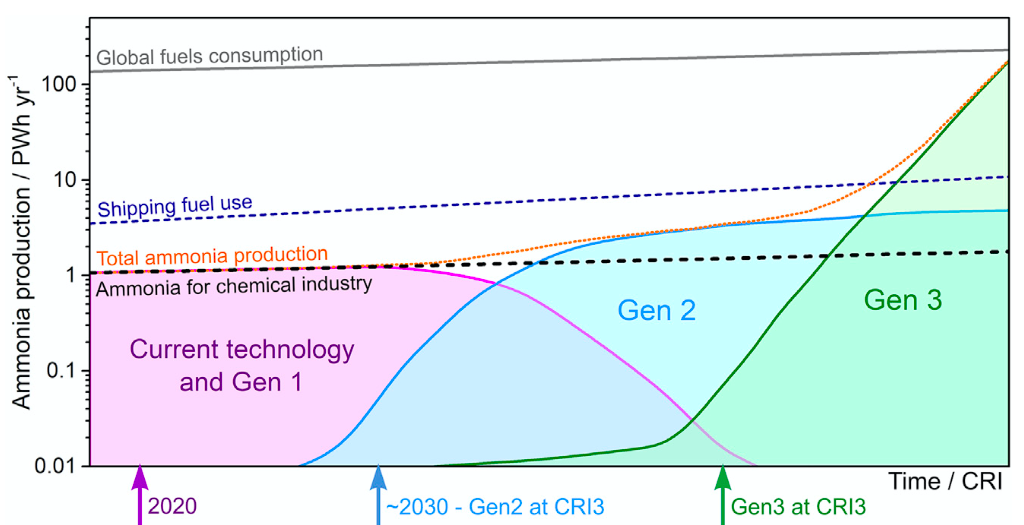Explore two flexible renewable ammonia production projects in China: Topsoe's in Baotou, and Envision Energy's in Chifeng City. We also welcome the Institute for Sustainable Process Technology to discuss the scale-up of electrolyzer plants to the GW-scale.
Ammonia Synthesis
Hydro-electric ammonia: project design, engineering & technology selection
To design, build & operate a hydroelectric ammonia production plant fed by electrolytic hydrogen, what considerations need to be taken into account? Our recent episode of Ammonia Project Features explored this question, focusing on an upcoming project being developed in Paraguay by ATOME, URBAS and Casale. The use of surplus hydropower, existing industrial infrastructure, proactive engineering and commercially-available, flexible ammonia synthesis technologies all adds up to a less challenging task for developers, and a potential project template going forward.
Enabling offshore production: jetty-less terminals & floating ammonia factories
Our last episode of Maritime Ammonia Insights featured new technologies being developed for the emerging offshore ammonia production industry. We explored SBM & Imodco’s jetty-less export terminal, H2Carrier’s P2X Floater vessel and CyaNH3’s FPSO hull design, as well as the unique opportunities on offer for floating ammonia producers.
Coupling solid oxide electrolysis to ammonia production
In our January episode of Ammonia Project Features, we explored the current commercial status of solid oxide electrolysis, and its potential to be integrated with ammonia production. Rick Beuttel (Bloom Energy) and Jakob Krummenacher (LSB industries) also discussed the utilization of the technology in a new decarbonization project at LSB’s ammonia plant in Pryor, Oklahoma.
How to reduce the LCoA of green NH3 with hybrid CSP-PV plants
Dynamic Analysis of Flex-gNH3 – a Green Ammonia Synthesis Process
Whither Aqueous Electro-reduction of Nitrogen to Ammonia?
Monash team publishes Ammonia Economy Roadmap
Earlier this month, Doug MacFarlane and his team of researchers at Monash University published A Roadmap to the Ammonia Economy in the journal Joule. The paper charts an evolution of ammonia synthesis “through multiple generations of technology development and scale-up.” It provides a clear assessment of “the increasingly diverse range of applications of ammonia as a fuel that is emerging,” and concludes with perspectives on the “broader scale sustainability of an ammonia economy,” with emphasis on the Nitrogen Cycle. The Roadmap is brilliant in its simple distillation of complex and competing technology developments across decades. It assesses the sustainability and scalability of three generations of ammonia synthesis technologies. Put simply, Gen1 is blue ammonia, Gen2 is green ammonia, and Gen3 is electrochemical ammonia. It also outlines the amount of research and development required before each could be broadly adopted (“commercial readiness”). The paper thus provides vital clarity on the role that each generation of technology could play in the energy transition, and the timing at which it could make its impact.
